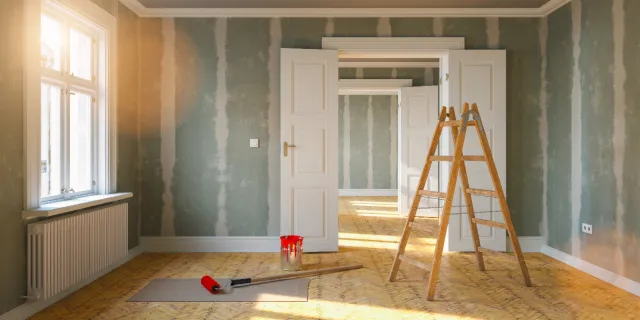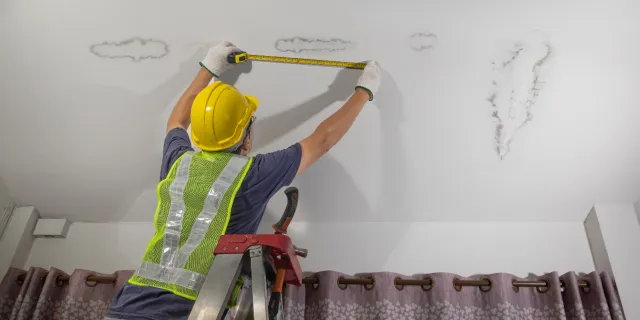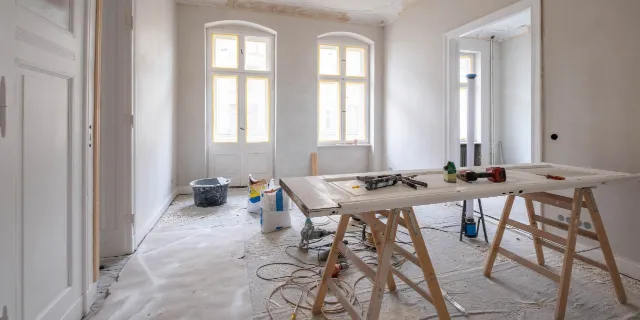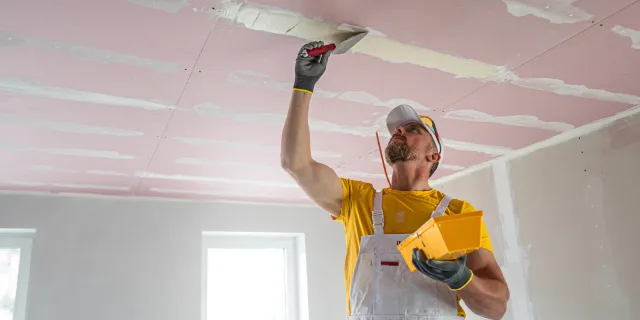Renovating or remodelling? The concept might seem similar, right? But did you know they actually mean two very different things?
While both aim to transform your home, they come with different goals, scopes, and outcomes that could shape your home project in entirely different ways.
Before hiring a contractor for your home makeover, it’s important to understand the fundamental differences between these terms to make a well-informed choice.
Understanding these differences can aid in managing your project, budget, and expectations more efficiently.
In this article, we will clarify the meanings of each term, compare their differences, and guide you in selecting the best method for your home transformation.

A Guide To Renovating & Remodelling
What is Renovation?
Home renovation refers to the process of restoring or updating an existing structure to improve its functionality, aesthetics, or condition.
This is typically a cosmetic overhaul, where the goal is to bring a space up to date without changing its overall structure.
Common renovation tasks include:
- Painting walls or updating wall coverings
- Replacing flooring (e.g., swapping carpet for hardwood)
- Updating fixtures such as light fixtures or faucets
- Repairing or refinishing surfaces like countertops or cabinets
- Improving insulation or energy efficiency
Renovating is often seen as less invasive and more budget-friendly compared to remodelling.
This is a great choice for people who want to refresh their home without altering its layout or design significantly.

What is Remodelling?
Remodelling, on the other hand, involves altering or changing the structure or layout of a space to create something entirely different or better suited to the homeowner’s needs.
This might involve moving walls, changing the floor plan, or even adding new features that didn’t exist before.
Remodelling typically requires more extensive work and a larger investment. It may include tasks such as:
- Changing room layouts (e.g., turning a kitchen into an open-concept space)
- Expanding or removing walls to create more space
- Adding new rooms or extensions to the home
- Replacing or upgrading plumbing, wiring, or structural elements
- Changing the function of a space (e.g., converting an attic into a bedroom)
Remodelling can be a significant undertaking and may involve permits and professional contractors to ensure everything is up to code.

Key Differences Between Renovation and Remodelling
| Aspect | Renovation | Remodelling |
|---|---|---|
| Definition | Updating or restoring an existing space to improve its appearance or condition. | Changing the structure, layout, or function of a space to create something new or different. |
| Scope | Less invasive, mostly cosmetic or superficial. | More involved, may include structural changes. |
| Cost | Generally, more affordable and cost-effective. | Typically, more expensive due to complexity and scale. |
| Timeframe | Shorter duration. | Longer duration due to the extent of work involved. |
| Examples | Painting walls, replacing flooring, updating fixtures. | Adding a new room, moving walls, changing the floor plan. |
| Permit Requirements | Rarely require permits, depending on the work. | Often requires permits and professional involvement. |
| Outcome | Enhanced look and feel of a space. | A completely transformed space with new functionality or design. |
Which One Should You Choose?
The decision between renovating and remodelling depends on your goals, budget, and how much disruption you’re willing to tolerate during the process.
Choose Renovation if:
- You want to refresh your space without changing the layout or structure.
- You have a limited budget and need a more cost-effective option.
- You need to improve the appearance or condition of your home but don’t require drastic changes.
- You want to increase the value of your home with simple updates, like new flooring or updated lighting.
Choose Remodelling if:
- You need more space or a completely new layout to fit your lifestyle.
- You’re willing to invest more time and money into the project for a significant transformation.
- You want to change the function of a room (e.g., turning a basement into a living area).
- You are looking for long-term home value through large-scale improvements that modernize your home and make it more functional.

Conclusion
In summary, while both renovation and remodelling can improve your home, they cater to different needs and budgets.
Renovation is best for simple updates and cosmetic changes, while remodelling is ideal for homeowners looking to make more significant alterations to their home’s structure and design.
Before deciding, carefully evaluate your needs, budget, and long-term plans to ensure you choose the right path for your home improvement project.
By understanding the differences between renovation and remodelling, you can make a clearer and more informed decision, ensuring your project achieves the desired results within your timeframe and budget.
Frequently Asked Questions (FAQs)
What’s the difference between renovation and remodelling?
Renovation is just updating you home’s appearance, while remodelling involves altering the whole layout of a space to create something new or better suited to your needs.
Which option is more cost-effective?
Renovation is generally more affordable because it is less invasive. Remodelling tends to be more expensive due to its larger scope of work.
Do I need permits for renovation or remodelling?
Renovation does not require permits. Remodelling often requires permits and professional contractors to ensure everything complies with building codes.
How long does each process take?
Renovation usually takes less time as it involves smaller changes. Remodelling tends to take longer because it often involves structural changes.
Which is better for increasing home value?
Both can increase home value, but remodelling usually provides a higher return on investment.
What should I consider when deciding between renovation and remodelling?
Consider your goals, budget, and the extent of changes you want.
Continue Reading:
2. 7 Free Practical AI Interior Design Apps To Design Your Homes
3. Colour Trends 2025: 5 Interior Shades to Paint Your Home Next Year
